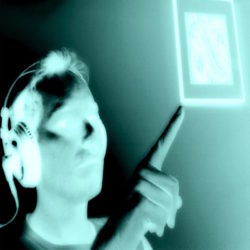From the traditional scientific viewpoint, people are observable, manipulable objects. Traditional doctors study people’s bodies; traditional psychologists study people’s minds. From the somatic viewpoint, people are more than just bodies understandable and approachable on a bio-physical level, and minds understandable and approachable on a psycho-social level. We are equally self-sensing, self-moving, self-aware, self-expressing, self-responsible subjects–we are somas. Somas who not only are shaped by their relations with the environment and other people in observable ways, but who also profoundly affect their own state of functioning through subjective beliefs, expectations, and through the power of their own self-awareness. Hanna and Wilber would agree that the first-person perspective discloses unique data, complimenting the third-person view of the human being, making it possible to move toward an integral understanding that recognizes the whole human.
Experientially-oriented therapy and somatic education are two distinct approaches with a common goal: to help people to move from an inefficient, unfulfilling, unhealthy mode of functioning to one of increased efficiency, fulfillment and health. That is to say, both approaches aim for transformation of the whole-person. On the surface, it appears each addresses separate levels of human experience, somatics being about improving people’s bodily functioning while therapy works to better psychological functioning. While the terms bodily and psychological do indeed refer to qualitatively distinct modes of experience, they are quite inseparable at both the structural and functional levels. As Hanna noted, all human experience–whether perceived as thinking, feeling, tasting, seeing or jumping–is a reflection of the functioning of the entire human soma, which is coordinated by the processes of the central nervous system.
As we discussed, from an objective vantage point, all our perceptions of self and world are routed through our brains via sensory nerves, while all our movements in the world and inside ourselves flow out from our brain down the spine via motor nerves. We saw how, through intelligent use one’s self-sensing abilities, a state of sensory-motor amnesia in a given area could be reversed by somatic learning. The implications that this understanding has for the field of psychology become evident when we consider the various qualities of psychological experience in their rootedness to this very same sensorimotor system. In fact, psychological modes of expression, such as thinking, verbalizing, and imagining, can all be understood in terms of the somatic process of movement, while the psychological constructs of self-consciousness and self-awareness can be understood in terms of the somatic process of self-sensing.
At first blush, such an understanding might appear reductionistic, but as we consider this perspective in light of both scientific (third-person) and somatic (first-person) data, we’ll see how such an understanding can only add to the psychological view and vice versa. If one understands that all self-expression manifests as the autonomous movement of living bodies (somas), then many of the characteristic problems plaguing contemporary society–typical forms of stress, fatigue, back pain, depression, anxiety—can be seen as the result of individuals’ diminished capacity for movement. This is easy to see when we’re looking at so-called physical problems, like back pain, but things get a little slippery when we consider mental processes, like thinking.
Integrating first and third person perspectives, Hanna noted several studies investigating the relationship between thinking and motor activity. Edmund Jacobson, who developed the clinical procedure called progressive relaxation, conducted research that showed: 1) when subjects engaged in abstract thinking, speech muscles were predominantly activated, and 2) all mental activity decreased to the degree that muscle tension decreased. In another study, researchers found that subjects were ineffective in mentally focusing on anything while all their muscles were paralyzed (by a curare-type drug that did not cause any lapse of consciousness).
Roland Davis found that when subjects worked out multiplication problems “in their head,” the muscles of the subject’s dominant hand moved as if he or she were writing. Working with a subject who reported auditory hallucinations, F.J. McGuigan found that, using electrodes placed about the subject’s speech muscles, there was a subtle, ongoing movement in these muscles beginning precisely when the subject reported hearing the voices (as if the subject were actually speaking to himself!). These and many other scientific studies suggest an undeniable connection between mental activity that is perceived as being “in our minds,” and motor activity going on “in our bodies.” Neurophysiologist Roger W. Sperry has gone as far as to conclude that the entire output of the human thinking mechanism goes into the motor system, so that when people think, they are activating motor neurons.
Hanna put it this way: “thinking is movement–actual movement of the living body.” He further noted that whenever we sense anything, what we are sensing is movement of some form. We often speak of being emotionally moved by an experience to communicate that we’re feeling or sensing some emotion. However, when one makes themselves as hard as stone through intense contractedness, one becomes to that degree immovable in terms of emotional experience. Since emotions are a variety of psychological experience with such clear ties to bodily-felt sensations, it is relatively easy to understand how one’s psychological awareness of an emotion is really not other than one’s bodily sense of that emotion. In other words, the knowledge or awareness that “I am angry” is possible only to the extent that I feel or sense certain changes in my bodily experience–perhaps an increase in heartbeat, the hairs of my neck standing on end, muscle areas clenching. Likewise, the bodily movements associated with that sense can be understood as an expression of that sense/awareness. Pissed off, I might express myself with a frown and clenched fists; or I might be moved to scream or pound my fists on something (hopefully not someone). And as we have seen, to suppress emotional expression is to dull our capacity to sense or to be aware of our feelings. So, in terms of emotionality, we can see how sensori-motor association is essentially the same thing as awareness-expression association.
The point of all this is to support the following notion: many of the physical as well as psychological problems characteristic of contemporary society will continue to be poorly understood and ineffectively approached until the somatic foundations of human experience are taken more fully into account. This somatic/experiential perspective, which has been outlined above, is a point of view which takes into account both third-person and first-person data, and thus has much to offer the traditional paradigm of human health, which relies rather exclusively on a third-person perspective.
At the core of this somatic/experiential understanding are the somatic processes of self-movement and self-sensing. The idea here is that many of the diseases plaguing modern people are best understood not as psychological disorders where are minds are out of whack, nor as physical problems of bodies falling apart; rather, we are faced with functional disorders that are the result of people’s diminished capacity to sense the state of their own somatic functioning and subsequent inability/unwillingness to move from that embodied awareness. Hanna sums it up nicely:
In functional disorders, what is required is not the exchange of words with the “mind,” nor is it the exchange of chemicals and substances with the “body.” The requirement is a change in the living system’s awareness of its own functioning. The somatic system needs more information of itself and more efficient control. In sum, the distorted human soma needs new sensory information and new motor control.

